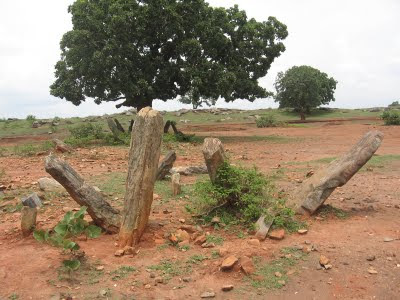Peepal is also a pollution indicator tree.
by
Dr. Nitish Priyadarshi
by
Dr. Nitish Priyadarshi

The Ficus Religosa (commonly known as Peepal tree in India) is one of the best known trees of India; it is planted in most villages of the country, and is held in high esteem by the people of India. Hindus and Buddhists hold the tree in veneration. The name religosa has reference to the tree often found near temples or shrines.
This is a tree that reaches very large proportions, it is in fact about the largest of our indigenous trees. The leaves are generally pendulous, that is , hanging down, and are such that a slight breeze sets them all quivering and trembling. There can hardly be a more peaceful scene than a peasant, at the end of a long day of toil in the fields, sitting under the village Peepal and being lulled to sleep by the rustling of its leaves.
Every villager in India knows that the Peepal has a very long life, compared with other common trees. There are records, however, of a tree taken to Ceylon (Sri Lanka) from Northern India in 288 B.C.; at the end of the 18th century the tree was still doing well; in 1852 it was, not just supposed, but known to be 2147 years old. There seems to have been a tradition in Sri Lanka that the ruling dynasty would last in power as long as the sacred Peepal (Ficus Religosa) remained alive. It was according to tradition, under this tree that Gautam Buddha, sat in meditation at Bodh Gaya in Bihar State of India.; unfortunately the original tree has disappeared, and is now replaced by a successor. There is a saying that it gives more oxygen than any other trees. It is an important host plant for the summer brood of lac insect. An aqueous extract of bark shows antibacterial activity.
Propogation of the Peepal is very easy, it may be done by seeds or by cuttings; natural regeneration takes place through the seeds scattered by birds. Cuttings, even large pieces, can be used with advantage. Peepal is good avenue trees, it is also used as fodder, fuel, fruit and medicinal. Protein concentration is high in Peepal trees. Hence integration of peepal tree with agricultural crops could play an important role in meeting the fodder requirements of animals. Peepal not only produce fodder, but also balance climatic conditions, control soil erosion, improve soil structure and its fertility. It is also dust and sound absorbent. It can also grow on highly degraded and poor soils and still provide useful out put for animal food, fuel wood and timber. Peepal tree is also known as pollution indicators. In recent study, researchers observed that pollutants such as sulphur dioxide, nitrous oxide and dust choke the roots, steam, flowers and fruits of the plants. Leaves are particularly sensitive to pollution. Earlier studies have shown a quantitative decrease in the chlorophyll A and B pigments in peepal tree by air pollutants such as sulphur dioxide.
Peepal trees have many medicinal uses. Juice extracted from the leaves is used for eardrops. The bark is used to heal inflammations of the neck and glandular swellings. Chewing the roots of a peepal tree is said to help prevent gum disease.
Its fruit is laxative which promotes digestion and checks vomiting. Its ripe fruits are good for the foul taste, thirst and heart diseases. The powered fruit is taken for Asthma. Its seeds have proved useful in urinary troubles. The leaves are used to treat constipation.


